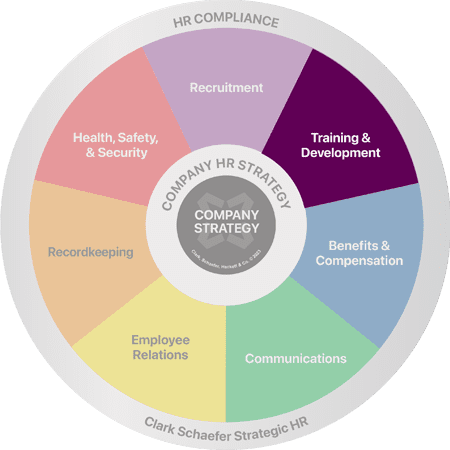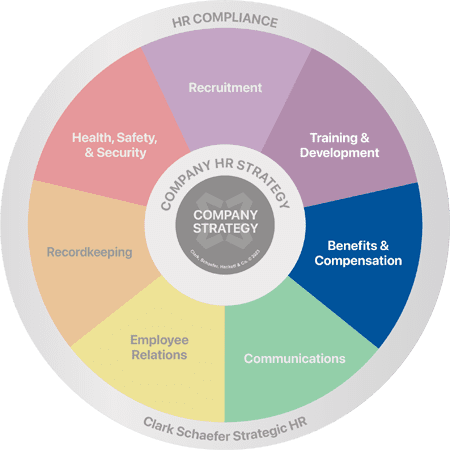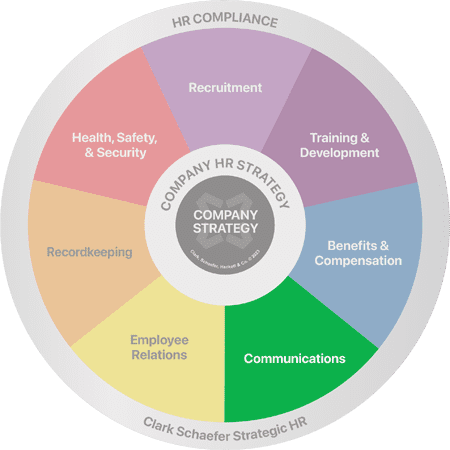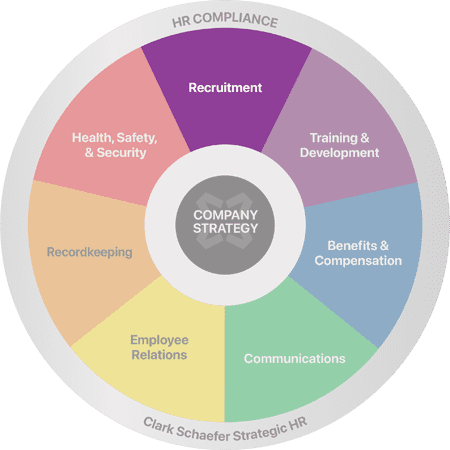What Are The Benefits of Providing a Mentoring Program?
Last Updated on June 20, 2023 / Training & Development
 HR Question:
HR Question:
Our team members have been asking for additional development opportunities and a mentoring program has been suggested. What are the benefits of a mentoring program, and how do we implement one?
HR Answer:
The benefits of having a mentor can be immeasurable. Almost 80% of CEO’s say they had mentors throughout their careers which led to greater career success. Mentors can provide a different lens to see challenges through; they can also provide excellent advice on both professional and personal fronts – and where those fronts intersect.
Having a mentor can make a clear, positive impact on someone’s career. But what can a mentorship program do for employers, as well?
Benefits of Having a Mentoring Program
For Employees:
Both the mentee and the mentor can benefit significantly from a mentor program. The mentee is able to find guidance, increase their knowledge and their network, and have a trusted and tested ally to bounce ideas off of. For the mentor, this relationship can give them the opportunity to give back or to pay their success forward. Additionally, the mentee may ask questions of the mentor that prompt the mentor to re-evaluate or re-examine their own opportunities through a different lens.
In the end, both parties can benefit from a trusted partner, an honest conversation, and someone they know they can lean on in the workplace, creating psychological safety.
For Employers:
As the University of California, Davis illustrates, the benefits are not for the employees alone! By implementing a mentorship program internally, organizations can:
- Increase retention by showing a commitment to growth, leadership, and continuous learning.
- Maintain institutional knowledge and encourage knowledge transfer.
- Foster an inclusive and diverse environment, improving their employment brand.
How to Implement Successfully
When implementing a mentoring program, follow the Society for Human Resource Management (SHRM)’s five-step plan:
- Establish requirements for participation from both groups.
- Establish specific activities and guidelines for the mentors.
- Acquire mentors and mentees.
- Match mentors and mentees.
- Monitor and evaluate the program during and after.
While each step is important in its own way, it is incredibly important to connect any activities, actions, or guidelines with your own goals for the organization. For example, do you have a goal of increasing retention and hiring from within? Make sure that you have activities related to how employees could see themselves growing in, up, and through the company. Is your goal to create a safe space and trusted ally between mentors and mentees for mental/physical health? Then make sure exercises, questions, and activities are geared toward building trust and open communication.
What Makes a Mentoring Program Excel
Meeting with your mentor on a regular basis with an outlined agenda will help you utilize your time wisely. Be prepared to talk about your goals and how you have moved the needle closer to the goal. What are the roadblocks you’ve experienced; how did you overcome them; how did you implement your mentor’s previous advice? You should talk about key takeaways and next steps for your next meeting.
When establishing a mentor program, make sure all participants are on the same page. When mentors and mentees aren’t aligned on desired outcomes, mentors might give advice that doesn’t match the situation, or mentees might feel disillusioned or frustrated. The partners don’t always have to agree – nor is each party always right – but setting expectations for open and respectful dialogue and honest feedback can be helpful for both sides.
Be sure to provide an out. If one party isn’t giving the amount of energy necessary for a successful partnership, or if roles aren’t being taken seriously, it’s important that everyone understands that the arrangement should only go on as long as both parties feel it is beneficial.
Special thanks to Tracy Walker and Sammie Kelly for contributing to this edition of our HR Question of the Week!
Providing impactful training and development opportunities can be a key factor in attracting and retaining the best talent. Learn more about how Strategic HR can help you build the right training and development programs for your workforce. Check out our Training and Development page or contact us today to learn more.









